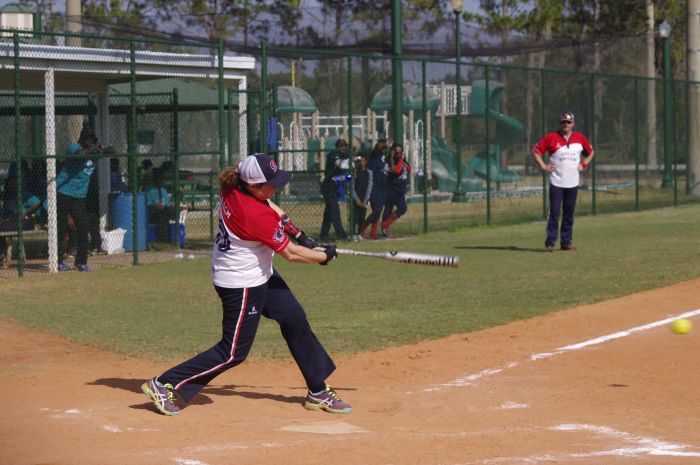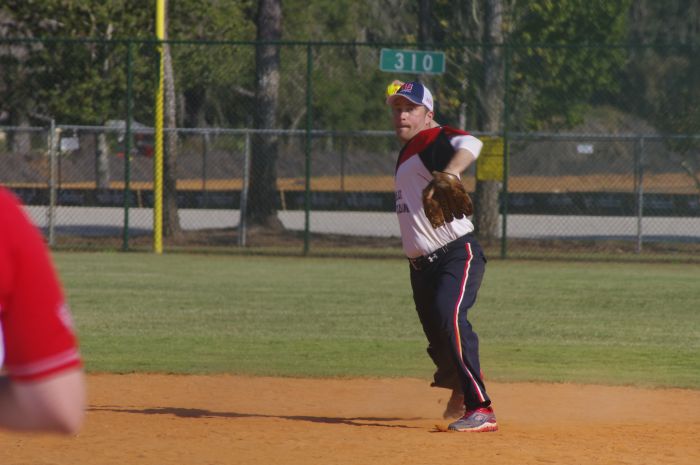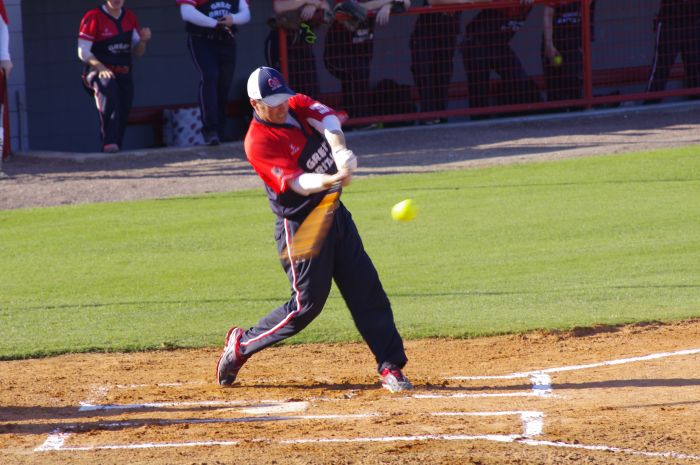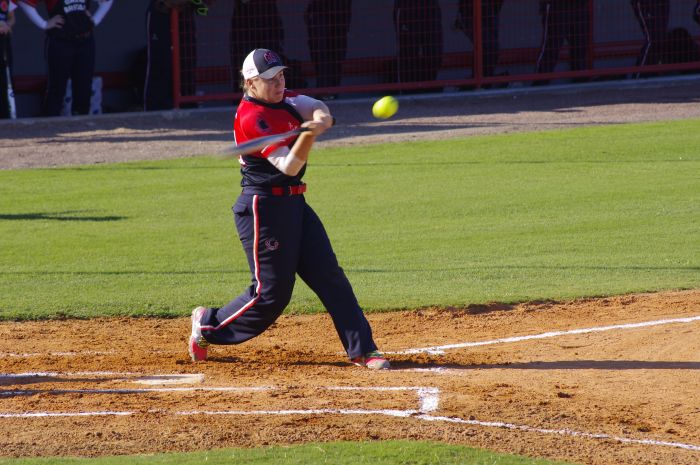.jpg) By Bob Fromer
By Bob Fromer
This article expresses the opinions of the author, not of the BSF or BSUK.
The 2016 Slowpitch World Cup in Plant City, Florida, where the GB Slowpitch Team failed to win the title but had some great games and a good time, is at a crossroads. The big question for the WBSC Softball Division and for GB Softball is: where does the competition go from here?
In many ways, the Slowpitch World Cup is a great event. It’s fun and friendly. Some very different cultures mix and thoroughly enjoy the experience. Over the past two years at least, there have been many competitive and exciting games.
But the number of entries this year was down to six teams, and has never been more than the eight teams achieved in 2015. Half the teams this year and last came from Europe – and it’s a long way to go to play teams that we meet anyway on our own continent. Apart from the Caribbean, where a number of countries attend, the rest of the world – and even the US and Canada – hasn't seemed very interested.
Is there a way to make this change? Based on discussions during the tournament, it seems there might be.
The ancient past
To see how we got to where we are today, it may be useful to look at the history of the Slowpitch World Cup.
The competition first took place in 2002, largely because Britain and Ireland, which may be the only two softball countries in the world where co-ed slowpitch is the overwhelmingly dominant format, persuaded what was then the International Softball Federation (ISF) that an international slowpitch competition would be a good idea.
This was just a few years after the European Slowpitch Championships had come into being, and the BSF and GB Softball were keen to expand the competitive horizons of the sport.
The ISF, with softball now in the Olympics, had some money to play with and a new headquarters in Plant City, Florida that included a four-diamond complex plus the former Cincinnati Reds spring training stadium. And the ISF’s deal with Plant City, in exchange for a peppercorn rent, was to bring as many tournaments to the complex as possible to boost the economy of a small Central Florida town.
So the first Slowpitch World Cup was scheduled for November 2002. The GB Softball Team programme sent two teams, not many other countries came, and one of the two GB teams won the title.
The tournament had not been a great success in terms of numbers, and the standard of play was mixed. So it was three more years before the ISF would repeat the experiment, in 2005, and the result was not much better. There were still not that many entries, though more than in 2002. GB didn’t win – a pick-up team notionally based in Scotland did. The ISF, with softball having just been dropped from the Olympics, had other fish to fry, and the tournament was put into mothballs.
But the BSF continued to lobby, along with the ESF’s Slowpitch Development Commissioner, John Austin, and eventually slowpitch became an agenda item at an ISF Congress for the first time ever. A number of the countries attending the session expressed interest in the idea of reviving the World Cup and possibly even moving to a full ISF Co-ed Slowpitch World Championship over time.
The tournament also had its strong supporters within the ISF, including Tournaments Director Laurie Gouthro and Umpire-in-Chief Bob Stanton.
So a new version of the Slowpitch World Cup came into being in 2014, with the idea of it being an annual event, and the tournament was held again in 2015 and has just concluded this year.
Modern history
In the first Slowpitch World Cup of the “modern era”, in 2014, the standard of play was pretty low. None of the other entries were anywhere near the level of GB and two local American teams from Florida, and games between those teams were the only ones that were competitive. GB lost in the final to one of the Florida teams.
But despite the disappointing standard of play, there was appreciation for the fact that the event was back on the international softball calendar, and enthusiasm for making it better.
That was achieved in 2015, when eight teams came. Disappointingly, there was no American team. But the Caribbean teams, having seen the standard required in 2014, were much improved, and a strong Canadian team that included a couple of players from their Border Battle Men’s Slowpitch squad attended. Germany, which had emerged as a force in Europe under Wolfgang Walther and Karim Abu-Omar, made their first appearance.
So the competition was largely excellent, and the only real problem was the weather, as rain disrupted play on several occasions and washed out the final. The Bahamas won, Germany was second, Canada third and GB fourth. At the end of the tournament, the Caribbean teams in particular were full of excitement, and vowed that they would get other Caribbean countries to attend. The future looked good.
Moving backwards
This year, however, the competition took a small step backwards. Only six countries attended, and there were no additional entries from the Caribbean. Canada failed to send a team, and a US team from Connecticut that had planned to come pulled out late, leaving no chance to find even a local Florida team able to replace them.
On the flip side, the weather this year was perfect, and most of the teams were competitive, producing a large number of exciting and entertaining games and uncertainty about who might win.
What need to happen now is finding a way to attract more teams to the event, from more parts of the world as well as from the tournament’s own North American backyard.
The GB dilemma
For the GB Softball Team programme, the World Cup has been a mixed experience. The fact that it has been organised later and with more uncertainty about entries than ESF slowpitch tournaments or the WBSC’s international fastpitch tournaments makes it tough for players who have taken a lot of time off for softball in the summer to commit to more time on relatively short notice in November.
As a result, since the competition resumed in 2014, GB Slowpitch has not been able to send its strongest team – the team that has been making mincemeat of everyone in the European Slowpitch Championship over the past few years. On the one hand, this has provided valuable experience for a wider range of players, which makes the GB Slowpitch pool stronger overall, and Head Coach Stephen Patterson has done an excellent job of getting the most from the players at his disposal in Florida and welding them into an effective team.
On the other hand, we are not winning the tournament.
There has been increasing discussion over the past couple of years to the effect that the GB programme should try to send its strongest team to Florida to win the World Cup while sending more of a development team to the European Championship, which would level the playing field a bit for other countries in Europe, though GB would still be likely to win.
But it will be easier to plan for this strategy when the future and nature of the World Slowpitch Cup becomes clearer.
What can be done?
While the 2016 Slowpitch World Cup was going on, discussions were taking place behind the scenes about how to enhance the event and attract more entries.
The tournament is a no-brainer for Caribbean teams, with flights to Florida often cheaper than to other Caribbean islands. But what could persuade other countries with at least some slowpitch traditions, such as Chinese Taipei, the Philippines, Hong Kong, New Zealand, most of Central and South America, Americans based in the Middle East and a number of Pacific Islands to find the considerable amount of money necessary to send a club, an All-Star team or a national team?
And in Europe, what could persuade the Czechs to come or the Irish to come back, or the Belgians to give it a try?
Here are some of the ideas that are currently being proposed to build up the Slowpitch World Cup and move towards a Co-ed Slowpitch World Championship:
- The next WBSC Softball Division Congress will be held in 2017. There needs to be another slowpitch session on the agenda, and strategies for building up the World Cup need to be at the heart of it. Countries that express interest should be followed up and supported.
- In the US, the Amateur Softball Association (ASA) has pledged to get more involved, and this is very good news. This year, the idea was to send a US team that had won a national title at an appropriate level, but for next year, the ASA will at least guarantee that one or more teams from Florida will commit to the competition.
- Meanwhile, the BSF’s Mike Jennings, who has been a prime mover in this event and has softball contacts around the world, plans to speak personally to officials at Softball Canada to see if they can provide more support and promotion for the event.
- There has been talk of associating the Slowpitch World Cup with another tournament, so that teams that come from a long way away can get more than just four days of softball and the trip becomes more worthwhile. Perhaps the tournament could be scheduled the week before or after one of the major co-ed tournaments often held in Florida. Maybe the World Cup could precede or follow some kind of Caribbean Challenge Tournament to be held in Plant City.
- The BSF has always pushed and promoted the Slowpitch World Cup in Europe, but perhaps we could do this even more, targeting those countries most likely to be interested.
These are just a few ideas and others are likely to emerge. Now the task will be to put these ideas into action.
Softball getting back in the Olympics in 2020 has of course moved the focus of the WBSC-SD back onto fastpitch, where in truth it has mostly always been. But slowpitch is still a key to the future of softball worldwide. The Olympic return may be for just one cycle only, and there is evidence that fastpitch softball is falling back in a number of traditionally strong softball countries.
However, as BSUK has demonstrated over the past decade in the UK, slowpitch softball presents the best opportunities for participation growth. Just as we need to redress the balance between slowpitch and fastpitch in our own slowpitch-dominated country, so other countries need to pay more attention to slowpitch as one of the best tools for getting more people into the sport.
Once this happens, a Slowpitch World Cup will begin to prosper and an eventual Co-ed Slowpitch World Championship may become a reality.
Photos by Pete Saunders




